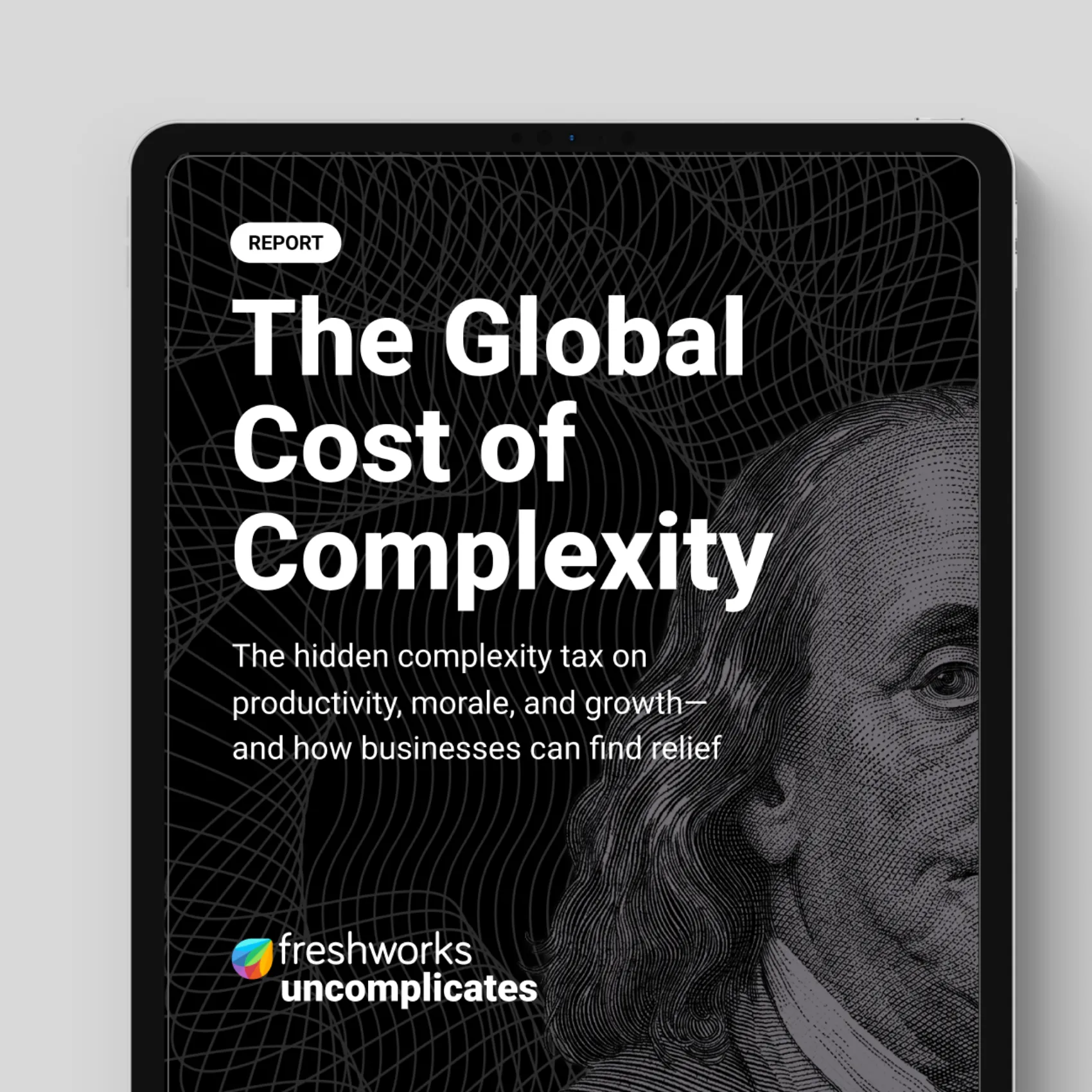The cost of complexity on business
A new report from Freshworks shows how complicated tech stacks and processes are impeding growth, draining revenue, and making employees miserable.
The modern workplace is suffocating under the weight of its own tools. As businesses expand their technology stacks and operational processes, they face a hidden but pervasive challenge: complexity. A new report from Freshworks has calculated exactly what that complexity costs and the impact it's having on growth.
The Global Cost of Complexity report, based on a global survey of 700 professionals across IT, customer experience, finance, and operations, reveals three areas where complexity causes the most damage: revenue, employee productivity, and morale.
The survey shows that organizational complexity drains an average of 7% of annual revenue—a loss roughly equal to the size of a typical R&D budget, according to EY.
The trillion-dollar drain
Business software has become a primary source of complexity. Companies waste $1 out of every $5 on software due to failed implementations, underused tools, and unexpected costs. Across the U.S. economy, software complexity costs nearly $1 trillion annually.
The financial impact extends far beyond the sticker price:
53% of companies haven't received the ROI they planned from their software
34% cite revenue leakage from software delays and missed business opportunities
43% say implementations have gone over budget in the last 12 months
77% of projects run longer than expected
"For years, companies have been conditioned to believe complexity signals sophistication. Our research confirms what I've long believed—the very tools meant to help businesses move faster are now holding them back," says Dennis Woodside, CEO of Freshworks.
Productivity is slowing
Employees lose nearly seven hours every week—almost a full workday—to complicated processes and fragmented tools.
Every day, workers contend with:
15 different software solutions and four communication channels on average
45% say their team works in silos
37% say their organization lacks a single source of truth
For years, companies have been conditioned to believe complexity signals sophistication. Our research confirms what I've long believed—the very tools meant to help businesses move faster are now holding them back.
Dennis Woodside
CEO and President, Freshworks
This growing complexity hits CX and IT professionals hardest. For CX teams, top frustrations include uncustomizable workflows (42%), toggling between too many tools (36%), and routine tasks taking too long (33%). For IT teams, top challenges are integrating with other systems (36%), siloed tools (32%), and clunky or outdated UX (28%).
Complexity causes people to quit
Beyond lost time and efficiency, the productivity crisis is taking a serious toll on morale. When employees are bogged down by complexity and poor change management, the impact drives turnover and amplifies burnout.
60% of surveyed employees said they are at least somewhat likely to leave their organizations within the next year
Primary drivers include organizational complexity (38%), complicated processes (30%), burnout (30%), and poor or difficult software (17%)
17% said someone on their team quit or burned out because of an implementation in the past year
"Complexity not only erodes the employee experience, but ultimately the customer experience as well. When people spend their energy managing systems instead of relationships, every customer interaction suffers," said Mika Yamamoto, Chief Customer and Marketing Officer at Freshworks.
Simplicity as a business strategy
The Global Cost of Complexity report points up how organizations can’t afford to treat complex enterprise software as a normal cost of doing business. But it also reveals a clear upside.
Organizations with high IT productivity deliver up to 35% higher revenue growth and 10% higher profit margins compared to their peers, McKinsey researchers found. Highly engaged teams achieve 23% higher profitability, Gallup found.
Complexity is a hidden tax on business—this study shows how organizations can begin to identify where and how it’s encroaching on growth, and take steps so that they can recover lost budgets and productivity and improve employee morale.
Want to understand your organization's complexity archetype? Take our quiz to find out where you rank—and what you can do to cut complexity.
Download the full Cost of Complexity report to explore all the research findings.
